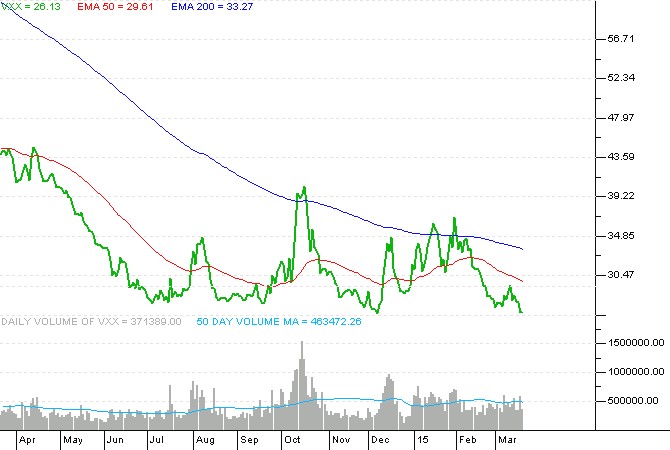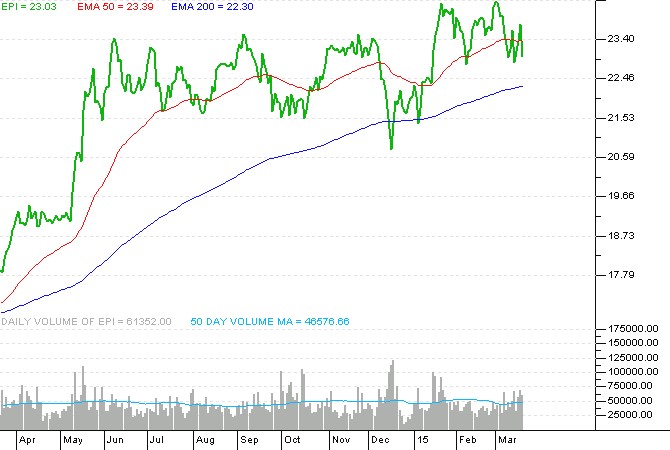The Fed Is Betting Big Tha S&P 500 ETF (ETF SPY) SPDR Dow Jones Industrial Average ETF (ETF
Post on: 3 Май, 2015 No Comment

The big focus in the market last week revolved around the possibility that Janet Yellen and her merry band of central bankers may need to change their tune at this weeks FOMC meeting.
More specifically, the issue is if there will be tweaks to the Feds forward guidance language, with most of the concern focused on the likelihood that the FOMC may drop the phrase considerable time from its post-meeting statement.
To review, these two simple words relate to the amount of time the Fed is expected to keep rates at current levels after QE ends — which is currently expected to happen next month.
If traders will recall, Janet Yellen made a bit of a gaffe at her first press conference by stating that the Feds view of considerable time is about six months.
The Problem: Two Little Words
Heres the problem. The general consensus for when the Fed will begin hiking rates is June 2015. However, the buzzer on the QE game clock will sound next month. Some quick math suggests that six months after October is April, not June.
Now toss in last weeks release of a paper published by the San Francisco Federal Reserve Bank, which basically suggested that investors may be underestimating the pace of Fed tightening, and boom — youve got some adjustments being made in the markets.
As Exhibit A, heres the fact that the yield on 10-year Treasury Bonds spiked from 2.461 percent to 2.614 percent last week and has moved up from 2.334 percent (an increase of 12 percent) in the last 10 trading sessions alone.
10-Year Treasury Yield Daily
Granted, this is a pretty big move in rates in a very short period of time. However, as anyone who has attempted to play the short side of the bond market will attest, trying to game when the big, bad bear market in bonds will actually commence has been a tough road.
ProShares UltraShort 20+ Year Treasury ETF (NYSE: TBT ) — Weekly
The bond bears have been saying for quite some time now that the bond market is not the place to be. The argument is pretty straightforward. The Fed is going to stop buying bonds, which will dramatically reduce demand for bonds (which should cause rates to rise). In addition, the Fed will then begin raising interest rates in order to normalize monetary policy.
In English, this means that the Fed will take the Fed Funds rate from zero to somewhere around 3-3.5 percent over a period of time. Everybody knows that when rates rise, bond prices fall.
As the chart below illustrates, rates certainly have a lot of room to rise.
10-Year Treasury Yield Weekly
In the near-term, a move back up to 3 percent on the 10-year would appear to be a cinch. This is simply where rates were at the beginning of this year. In looking at the weekly chart of yields, a move back toward the 4 percent level — a level last seen in 2009-2010 — would be logical.
Next, traders are looking at where rates were the last time the economy was healthy. Intuitively, this would seem to represent an ultimate stopping point for rates once the Fed has finished normalizing monetary policy. As the chart above shows, the level seen in 2007 was 5.2 percent, which is just about double where the yield on the 10-year is now.
The Feds BIG Bet
Everybody knows that the Fed is going to end QE. Everybody knows that the Fed will then wait a while before starting to raise rates. And everybody knows that returning rates to normalized levels will be a long, gradual process.
However, what investors dont know is if the Fed will be able to keep the markets from freaking out once the normalization process begins.
Remember, the Fed hopes that by communicating their plans to raise rates slowly and gently over time, the markets wont freak out. The fear, of course, if that another market meltdown would cause the economy to stop on a dime (again) and that the Fed would then be forced to deal with the possibility of recession (again).
The Fed is betting (and betting big) that by communicating exactly what will happen and when, markets will remain calm. The Fed is betting that since the increase in rates will be slow and steady and that the rate-hike campaign is intended merely to get things back to normal, the markets wont freak out.
When considered objectively, the Feds plan/big bet certainly makes sense. The reason that rates are being increased is that the economy is finally improving and is no longer in need of stimulative measures. The thinking is that the markets will see this as a good thing.

Remember, an improving economy means better earnings. Better earnings mean better valuations and in turn, higher stock prices. As such, the thinking is that investors should be cheering the Feds move and not dreading it.
Heres the Rub
The bottom line here is Feds plan has never been implemented before. As such, the plan represents a bet — a very big bet — on what the economic outcome will be.
Lest investors forget, the Dont fight the Fed strategy has worked both ways for a very long time. On the rate-hike side of the equation, historically its three steps and a stumble for the stock market. Granted, selling stocks after the Fed has hiked rates three times (without an intervening rate cut) hasnt always worked. But the record of this particular strategy is fairly impressive.
The Fed is basically betting that this time will be different.
Time For Investors to Place Their Bets?
As far as the stock market is concerned, the big bet is that any adjustments made to the major stock market indices will prove to be temporary and that the corrective declines will be relatively shallow. So far at least, the stock market does seem to be taking the most recent spike in rates in stride.
Currently, it appears that traders are watching the moves in rates and the dollar very closely. As one can see from the chart of the Dow below, it appears that some very modest adjustments may be taking place.
Dow Jones Industrial Average — Daily
With stock market investors having enjoyed a stellar move over the past three years and one of the best bull markets in history since 3/9/2009, those seeing the glass as half empty are concerned that it is time for the market to go the other way and that the normalization process will end badly.
But on the other sideline, the bulls contend that the improving economy will win out in the end. Our heroes in horns argue that stocks have entered a secular bull market and that the move from 2009 is just the beginning.
So there you have it. From a macro point of view, it is time for investors to size up the situation and place their bets.
2015 Benzinga.com. Benzinga does not provide investment advice. All rights reserved.














